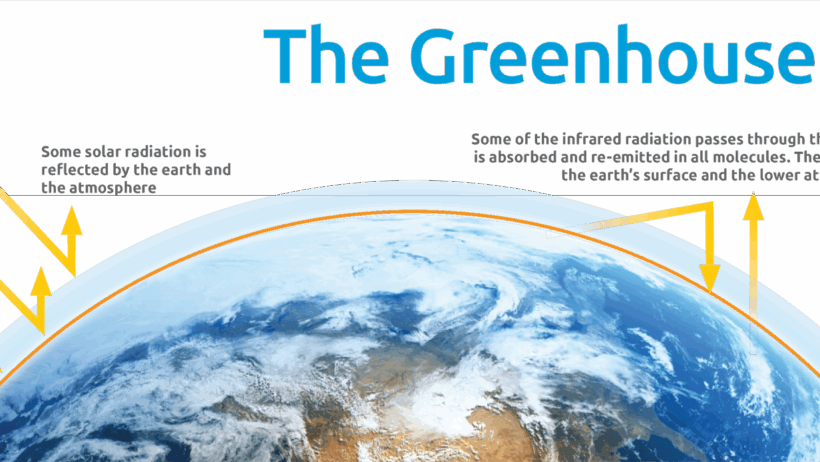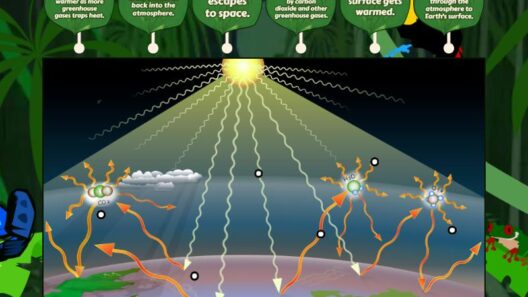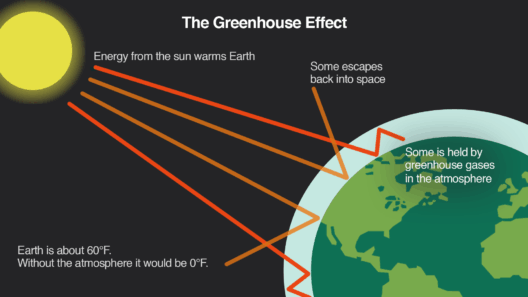When gazing at the celestial tapestry that blankets our night sky, one might consider how different planets not only exist in isolation but also how their atmospheric compositions shape their very nature. The phenomenon of the greenhouse effect plays a riveting role in dictating climatic conditions across various planets within our solar system. The allure of this atmospheric quirk enkindles curiosity, especially when comparing planets that showcase the transformative prowess of greenhouse gases.
Though it may seem that Earth holds the singular narrative of occurrences tied to greenhouse gases, in truth, numerous other planets exhibit varying degrees of this effect, each presenting a unique storyline of environmental extremes.
Understanding the planets that exhibit the greenhouse effect opens a doorway to grasp the broader cosmological implications of atmospheric dynamics. Let’s journey through the planets profoundly influenced by the greenhouse effect.
Exploring Venus and Its Extreme Atmosphere
Venus, the second planet from the Sun, epitomizes the concept of a runaway greenhouse effect. Often referred to as Earth’s twin due to its similar size and proximity, Venus diverges dramatically in its atmospheric conditions. Enshrouded by thick clouds of sulfuric acid, the atmosphere is predominantly carbon dioxide, contributing to a staggering surface pressure approximately 92 times that of Earth.
This oppressive pressure, combined with a formidable greenhouse effect, leads to surface temperatures that soar to around 900 degrees Fahrenheit (475 degrees Celsius). The phenomenon not only renders Venus inhospitable but also serves as a stark reminder of the potential consequences of unchecked greenhouse gas concentrations.
As one contemplates the inconsistent beauty of Venus—a planet often drifted by glowing silver clouds and resembling an otherworldly jewel—its brutal climatic truths reveal a duality that is both captivating and cautionary.
Examining Mars and Its Fragile Atmosphere
In striking contrast, Mars showcases a much more subdued version of the greenhouse effect. Once considered potentially vibrant, current scientific inquiry posits that Mars’ atmosphere, composed of about 95% carbon dioxide, could facilitate a classical greenhouse effect, albeit to a considerably lesser extent than that observed on Venus.
The thin Martian atmosphere, with a surface pressure less than one percent of Earth’s, proves a formidable barrier to maintaining warmth. Surface temperatures can dip to minus 195 degrees Fahrenheit (minus 125 degrees Celsius) during winter at the poles, illustrating that even a greenhouse gas-rich atmosphere can be rendered ineffective without sufficient atmospheric density. Yet, the intriguing potential for climate adaptations and the possibility of terraforming echo through the exploration of this planet.
Moreover, the discovery of ice caps and seasonal methane emissions hints at an enigmatic interaction between geology and climate, suggesting a more dynamic past where greenhouse gases might have sustained a climate conducive to life. These discoveries cast Mars in an aesthetic light, revealing a land of both desolation and speculative potential.
The Enigmatic Atmosphere of Titan
Shifting our focus beyond terrestrial confines, we encounter Titan, Saturn’s largest moon. Titanis characterized by a dense atmosphere primarily composed of nitrogen, with a significant presence of methane, a potent greenhouse gas. Surprisingly, it functions quite differently compared to terrestrial models, presenting a unique case of a cold greenhouse effect.
Beneath Titan’s dense atmosphere lies a landscape composed of hydrocarbons, with lakes and rivers of liquid methane and ethane. This extraordinary feature generates an intriguing question—does Titan’s atmosphere exhibit greenhouse behavior that facilitates a balance between the stark cold of space and the liquid-like geophysical phenomena found on its surface? The cold greenhouse effect of Titan not only captivates scientists but also showcases the extraordinary complexity within our solar system.
The other captivating aspect lies in Titan’s haze. The thick, orange layers veil the moon and create a stunning aesthetic, contrasting the icy surfaces below. This visual appeal paradoxically emphasizes the intriguing interplay between celestial beauty and harsh climatic realities.
Earth: A Glimpse of Hope and Responsibility
While the exploration of Venus, Mars, and Titan elucidates the diverse presentations of greenhouse effects across our solar neighborhood, Earth stands as both an anomaly and a vital reference point. Its balanced atmosphere contains a modest greenhouse gas layer, primarily composed of water vapor, carbon dioxide, methane, and nitrous oxide—each essential for nurturing life.
This perfect blend enables a climate conducive to biodiversity, fostering a thriving tapestry of ecosystems. However, the accelerated anthropogenic emissions of greenhouse gases raise alarm bells, provoking questions about the future equilibrium of our planet’s climate. Earth’s aesthetic appeal—its azure skies, verdant landscapes, and vibrant life—exists in a delicate equilibrium, rendered increasingly precarious by our actions.
As we unfurl the narratives of these planets, we uncover profound lessons about the essence of balance and sustainability. The phenomenon of the greenhouse effect transcends mere scientific curiosity, emerging as an imperative focusing on our responsibilities as stewards of the Earth.
In contemplating the future, one might marvel at the vast complexities woven into the very fabric of our solar system. From Venus’s extreme cautionary tale to Mars’s fragile whispers of potential, and Titan’s cold wonder, the interplay of greenhouse gases on various planets serves as both a source of intrigue and a solemn reminder. How humanity navigates its path with regard to atmospheric stewardship may ultimately determine whether we too become a cautionary tale—or a beacon of sustainability shining in the cosmic vastness.






